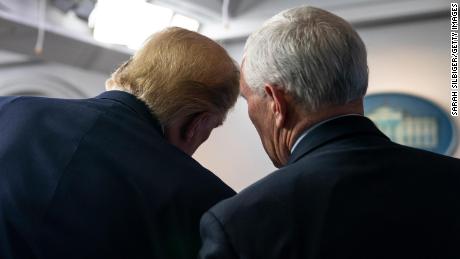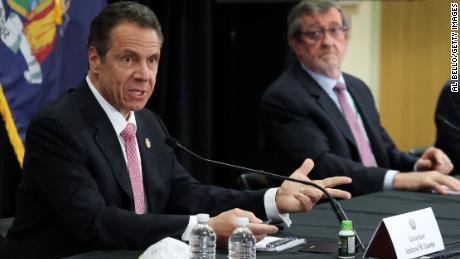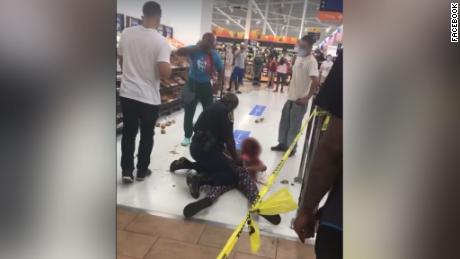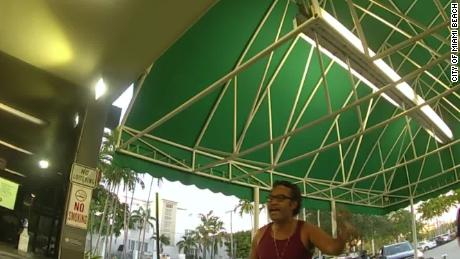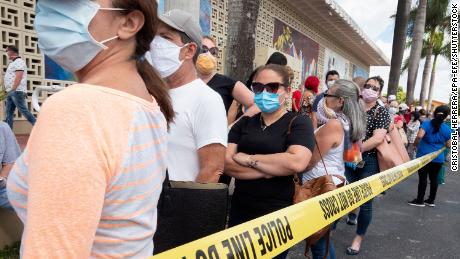Those bright spots come as swaths of the country continue to disagree on how to move forward with battling the deadly virus
“The good news is we’re finally ahead of this virus,” New York Gov. Andrew Cuomo said at a coronavirus briefing Friday. “We haven’t killed the beast, but we are ahead of it.”
Numbers appear better in other parts of the US, too. Hawaii on Friday reported no confirmed cases of coronavirus for the first time since March 13. Meanwhile, Friday was the second day in a row that hard-hit New Orleans in Louisiana reported no new coronavirus deaths.
Those bright spots come as swaths of the country continue to disagree on how to move forward with battling the deadly virus.

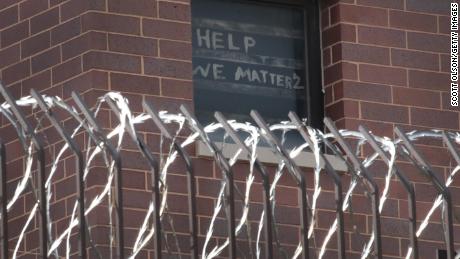
With nearly 400 cases of Covid-19 having been diagnosed among the inmates and employees at the Cook County jail, the jail is nation’s largest-known source of coronavirus infections.
Infections from the White House to prisons
As states continue to navigate the reopening process, the White House is coping with at least two cases of the virus among its staff members.
The President and Vice President have since tested negative, deputy White House press secretary Hogan Gidley said.
In Arkansas, more than 1,000 inmates have tested positive — with 876 from a single correctional facility, according to Dr. Nate Smith, the Director of the Arkansas Department of Health. For Ohio, 20% of the state’s infections are attributed to people behind bars.
Throughout the pandemic’s hold on the US, nursing homes also have been especially vulnerable. The large populations in close quarters as well as the virus’s severity on older adults has led to large numbers of infections.

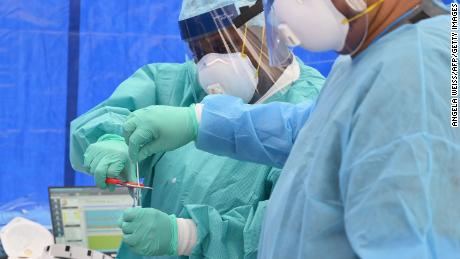
Healthcare workers place a nasal swab from a patient into a tube for testing at the Brightpoint Health and UJA-Federation of New York free pop-up coronavirus testing site.
Call for parents’ vigilance after death of 5-year-old
A 5-year-old boy died Thursday from coronavirus-related complications, Cuomo said in a news conference on Friday.
“This would be really painful news and would open up an entirely different chapter, because I can’t tell you how many people I spoke to who took peace and solace in the fact that children were not getting infected,” Cuomo said. “We thought children could be vehicles of transmission … but we didn’t think children would suffer from it.”
The governor did not name the child but said the state’s health department is investigating other cases with similar circumstances.
The death comes the same week state officials sent an advisory to health care providers saying that dozens of children in New York have been hospitalized with a condition doctors described as “pediatric multisystem inflammatory syndrome.”
Most of them tested positive for coronavirus or had positive antibody tests.
“We were led to believe that the good news about this virus was that it doesn’t affect children … now we have a new issue that we’re looking at,” Cuomo said.

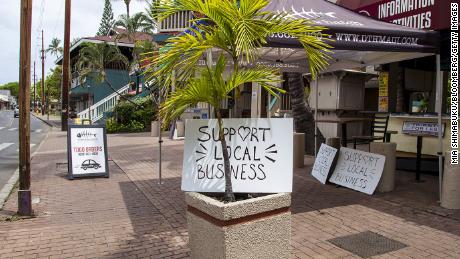
“Support Local Business” signs are posted along Front Street in Lahaina, Hawaii, on Friday.
Tempers flare over masks and business restrictions
The city of Stillwater, Oklahoma, revoked an order requiring residents to wear face coverings inside buildings after workers received threats.
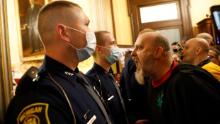
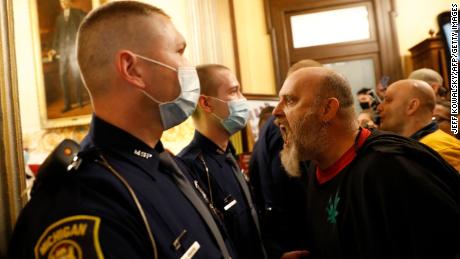
Unmasked protesters in Michigan try to enter the state’s House of Representatives chamber but are blocked by masked Michigan State Police.
Employment sees worst numbers since the Great Depression
The coronavirus pandemic has put Americans out of work at historic levels.
The US economy lost 20.5 million jobs in April, the Bureau of Labor Statistics said Friday. Many economies began to shut down to curb the spread of the virus in March, which saw 870,000 jobs cut.
The layoffs were more than double the jobs lost during the 2008 financial crisis. In just two months, the pandemic wiped out the progress of years of recovery for the nation.
Unemployment soared as a result, reaching 14.7% in April. That is the highest level since the BLS began recording the monthly rate in 1948.
Americans last saw such severe unemployment during the Great Depression. At its peak in 1933, the unemployment rate was at 24.9%, according to historical annual estimates from BLS.
CNN’s Faith Karimi, Jason Hanna, Andy Rose, Elizabeth Joseph, Kay Jones and Kevin Liptak contributed to this report.
![]()




